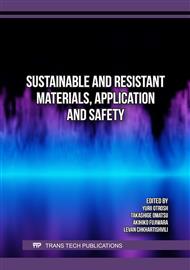p.41
p.49
p.61
p.67
p.73
p.79
p.89
p.97
p.105
Performance Assessment of Alkaline Earth Metal Silicates for Lauric Acid Removal: An Analytical Hierarchy Process (AHP) Approach
Abstract:
This study investigated the potential of acid-pretreated rice husk ash (RHA) sourced alkaline earth metal silicates for lauric acid (LA) adsorption. The synthesized materials were characterized using BET, FTIR, XRD, EDS, and SEM analyses, demonstrating that metal cation size had a notable effect on surface area, pore structure, crystallinity, and particle aggregation. Magnesium silicate (MS-1.0), with its smaller atomic radius, exhibited the highest surface area and the most porous structure among the samples. Calcium silicate (CS-1.0) displayed a moderate surface area with a mesoporous structure, while strontium silicate (SS-1.0), having the largest atomic radius, exhibited the lowest surface area, a predominantly macroporous structure and the highest degree of particle aggregation. The synthesized alkaline earth metal silicates were tested for LA adsorption performance and compared using the analytical hierarchy process (AHP). CS-1.0 demonstrated the highest LA removal efficiency (59.94% ± 11.24%) and adsorption capacity (8.68 ± 1.60 mmol/g), while MS-1.0 had the lowest removal efficiency (17.64 ± 3.28%) and adsorption capacity (2.60 ± 0.50 mmol/g). Interestingly, the production yield increased from MS-1.0 to CS-1.0 and SS-1.0. Through the AHP method, CS-1.0 was identified as the best-performing adsorbent in this study, considering both adsorption efficiency and production yield with the highest priority value of 0.9603.
Info:
Periodical:
Pages:
73-78
Citation:
Online since:
October 2025
Price:
Сopyright:
© 2025 Trans Tech Publications Ltd. All Rights Reserved
Share:
Citation:


